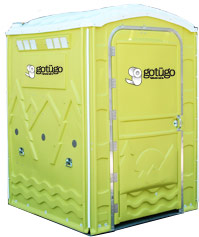
Don’t call it a conspiracy. Perhaps just call it an oversight that a ADA porta potty does not always find its way to events where at least one is needed. The disabled compose such a small minority of the population that unless the Americans with Disabilities Act (ADA) requires ADA-accessible porta potties at functions, they often get overlooked in porta potty rental plans.
Large events with porta potty rental of 20 units or more might include one ADA rental, but smaller events frequently fail to consider that someone with a ADA may attend. This not only makes the experience less enjoyable for the disabled individual, but inconveniences others as well. If an event is so small it only needs one unit, then that unit should be a ADA porta potty just to ensure that everyone’s sanitary needs are met. If the event needs only two porta potties –one for men and one for women– they should both be suitable for the disabled.
Many specific requirements apply to portable sanitary facilities. For example, smokestack ventilation is always important because it takes any displeasing fragrance from the unit and moves it above the crowds. Insufficient ventilation around the unit can foul an event for everyone.
Disabled access means wheelchair accessibility, which means wider doors and level bases. It takes only a small obstruction to block a wheelchair. Units with access near the ground, rather than access on the ground, often work best. Near-ground access means the unit has a thicker floor. With near-ground access, event planners can prepare the ground to make the entrance level, or simply add a small ramp and threshold.
The second thing that has to be different from a regular porta potty is the door. The wheelchair bound need wider doors –about three feet wide– in order to access the porta potty. Another thing often overlooked is the difficulty the disabled can have closing the door behind them. Pneumatic door closures solve this problem simply, and an easily accessible lock hasp simplifies the assurance of privacy.
A ADA porta potty also needs to be wide enough in all directions for a wheelchair to turn around. The increase in motorized chairs really emphasizes this need. Porta potties for the disabled should be five feet high all around, and have rails on at least three walls — and the walls need to be strong enough to support a heavy person’s weight. Finally, the toilet seat needs to be high enough that the person doesn’t need to fight gravity to get back up.
The differences between a ADA-accessible porta potty and a regular porta potty aren’t going to be a point of contention at an event. In fact, when the needs of the disabled are considered in porta potty rental, it makes any event better for everyone. Think of it like the air conditioning in a building. When it is done right, most people never think twice about it. When it is done wrong, everybody notices.